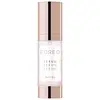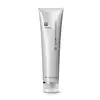What's inside
What's inside
 Key Ingredients
Key Ingredients

 Benefits
Benefits

 Concerns
Concerns

 Ingredients Side-by-side
Ingredients Side-by-side

Water
Skin ConditioningGlycerin
HumectantPropanediol
SolventCyclopentasiloxane
EmollientDiglycerin
HumectantXylitol
HumectantPentylene Glycol
Skin ConditioningButylene Glycol
HumectantPEG/PPG-17/6 Copolymer
SolventGlyceryl Polymethacrylate
Glycereth-26
HumectantPEG/PPG-14/7 Dimethyl Ether
Skin ConditioningSqualane
EmollientHyaluronic Acid
HumectantSodium Hyaluronate
HumectantSodium Hyaluronate Crosspolymer
HumectantHydrolyzed Hyaluronic Acid
HumectantBetaine
HumectantOctyldodeceth-16
EmulsifyingGlyceryl Glucoside
HumectantPropylene Glycol
HumectantCaprylyl Glycol
EmollientCarbomer
Emulsion StabilisingTriethanolamine
BufferingAcacia Senegal Gum
MaskingGelatin
Panthenol
Skin ConditioningXanthan Gum
EmulsifyingTrehalose
HumectantUrea
BufferingEthylhexylglycerin
Skin ConditioningAdenosine
Skin Conditioning1,2-Hexanediol
Skin ConditioningSodium PCA
HumectantSerine
MaskingGlucose
HumectantAlgin
MaskingDisodium Phosphate
BufferingGlyceryl Polyacrylate
Pullulan
Hydrolyzed Glycosaminoglycans
HumectantPotassium Phosphate
BufferingCI 14700
Cosmetic ColorantBenzyl Glycol
SolventRaspberry Ketone
MaskingWater, Glycerin, Propanediol, Cyclopentasiloxane, Diglycerin, Xylitol, Pentylene Glycol, Butylene Glycol, PEG/PPG-17/6 Copolymer, Glyceryl Polymethacrylate, Glycereth-26, PEG/PPG-14/7 Dimethyl Ether, Squalane, Hyaluronic Acid, Sodium Hyaluronate, Sodium Hyaluronate Crosspolymer, Hydrolyzed Hyaluronic Acid, Betaine, Octyldodeceth-16, Glyceryl Glucoside, Propylene Glycol, Caprylyl Glycol, Carbomer, Triethanolamine, Acacia Senegal Gum, Gelatin, Panthenol, Xanthan Gum, Trehalose, Urea, Ethylhexylglycerin, Adenosine, 1,2-Hexanediol, Sodium PCA, Serine, Glucose, Algin, Disodium Phosphate, Glyceryl Polyacrylate, Pullulan, Hydrolyzed Glycosaminoglycans, Potassium Phosphate, CI 14700, Benzyl Glycol, Raspberry Ketone
Water
Skin ConditioningHoney Extract
HumectantC12-15 Alkyl Benzoate
AntimicrobialDimethicone
EmollientHydroxyethyl Acrylate/Sodium Acryloyldimethyl Taurate Copolymer
Emulsion StabilisingEthoxydiglycol
HumectantButylene Glycol
HumectantIsohexadecane
EmollientCyclopentasiloxane
EmollientEthylhexyl Palmitate
EmollientPolymethyl Methacrylate
Hibiscus Abelmoschus Extract
MaskingChenopodium Quinoa Seed Extract
Skin ConditioningPalmitoyl Oligopeptide
CleansingCetyl Alcohol
EmollientEchinacea Purpurea Extract
MoisturisingAlgae Extract
EmollientCyclohexasiloxane
EmollientHelianthus Annuus Seed Oil
EmollientSodium Hyaluronate
HumectantPEG-8
HumectantIlex Paraguariensis Leaf Extract
PerfumingPEG-7 Trimethylolpropane Coconut Ether
EmulsifyingSqualane
EmollientSteareth-20
CleansingTocopheryl Acetate
AntioxidantLaminaria Digitata Extract
Skin ProtectingAloe Barbadensis Leaf Juice
Skin ConditioningSorbitan Isostearate
EmulsifyingPolyisobutene
PEG-75 Stearate
Glyceryl Stearate
EmollientPolysorbate 60
EmulsifyingCeteth-20
CleansingGlyceryl Polymethacrylate
Disodium EDTA
Aminomethyl Propanol
BufferingParfum
MaskingPhenoxyethanol
PreservativeChlorphenesin
AntimicrobialWater, Honey Extract, C12-15 Alkyl Benzoate, Dimethicone, Hydroxyethyl Acrylate/Sodium Acryloyldimethyl Taurate Copolymer, Ethoxydiglycol, Butylene Glycol, Isohexadecane, Cyclopentasiloxane, Ethylhexyl Palmitate, Polymethyl Methacrylate, Hibiscus Abelmoschus Extract, Chenopodium Quinoa Seed Extract, Palmitoyl Oligopeptide, Cetyl Alcohol, Echinacea Purpurea Extract, Algae Extract, Cyclohexasiloxane, Helianthus Annuus Seed Oil, Sodium Hyaluronate, PEG-8, Ilex Paraguariensis Leaf Extract, PEG-7 Trimethylolpropane Coconut Ether, Squalane, Steareth-20, Tocopheryl Acetate, Laminaria Digitata Extract, Aloe Barbadensis Leaf Juice, Sorbitan Isostearate, Polyisobutene, PEG-75 Stearate, Glyceryl Stearate, Polysorbate 60, Ceteth-20, Glyceryl Polymethacrylate, Disodium EDTA, Aminomethyl Propanol, Parfum, Phenoxyethanol, Chlorphenesin
Ingredients Explained
These ingredients are found in both products.
Ingredients higher up in an ingredient list are typically present in a larger amount.
Butylene Glycol (or BG) is used within cosmetic products for a few different reasons:
Overall, Butylene Glycol is a safe and well-rounded ingredient that works well with other ingredients.
Though this ingredient works well with most skin types, some people with sensitive skin may experience a reaction such as allergic rashes, closed comedones, or itchiness.
Learn more about Butylene GlycolCyclopentasiloxane, or D5, is a silicone used to improve texture of products and trap moisture.
D5 is considered lightweight and volatile. Volatile means it evaporates quickly after application. Once evaporated, D5 leaves a thin barrier that helps keep skin hydrated.
It is also an emollient. Emollients help soften the skin and prevent water loss. Silicones create a silky texture in products. D5 helps other ingredients become more spreadable.
Studies show D5 is safe to use in skincare products. We recommend speaking with a skincare professional if you have concerns.
Learn more about CyclopentasiloxaneWe don't have a description for Glyceryl Polymethacrylate yet.
Sodium Hyaluronate is hyaluronic acid's salt form. It is commonly derived from the sodium salt of hyaluronic acid.
Like hyaluronic acid, it is great at holding water and acts as a humectant. This makes it a great skin hydrating ingredient.
Sodium Hyaluronate is naturally occurring in our bodies and is mostly found in eye fluid and joints.
These are some other common types of Hyaluronic Acid:
Learn more about Sodium HyaluronateSqualane is an emollient that helps the skin hold onto moisture. It's an oily liquid that occurs naturally in certain types of fish and plant oils.
Because squalane boosts hydration in the skin, it also comes with plenty of benefits: it is an antioxidant and can help fight free radicals and skin damage. Squalane is also found to have a detoxifying effect when applied.
Squalane comes from squalene, which occurs naturally within the sebum of our skin. It is one of the oils our skin produces to keep itself hydrated. Squalane is the hydrogenated version of squalene and has a longer shelf life.
Research shows that squalane is non-irritating (even at 100% concentration).
In general, it's a fantastic ingredient. It does a great job at hydrating the skin, and it's suitable for those with sensitive skin.
The source of squalane may impact malassezia / fungal acne. This is because olive oil derived squalane can contain impurities such as fatty acids and plant waxes. Sugarcane derived squalane is recommended for anyone with malassezia concerns.
Is squalane vegan?
This depends on the source. Squalane can be derived from both plants and animals. Most squalane used in skincare comes from plants.
Please note: the source of squalane is only known if disclosed by the brand. We recommend reaching out to the brand if you have any questions about their squalane.
Read more about squalene with an "e".
Is squalane an oil?
Squalane is often called an oil, but it’s technically not; it’s a hydrocarbon, meaning it’s only made of carbon and hydrogen, unlike true oils which are triglycerides made of fatty acids and glycerol.
The term “oil-free” isn’t regulated, so companies can define it however they want. Some exclude all oils, while others just avoid mineral oil or comedogenic oils.
While some people avoid oils thinking they cause breakouts, the right kind of oil (or oil-like ingredient like squalane) can actually help balance and hydrate your skin. It’s worth testing out simple oils or squalane to see what works best for your skin.
Learn more about SqualaneWater. It's the most common cosmetic ingredient of all. You'll usually see it at the top of ingredient lists, meaning that it makes up the largest part of the product.
So why is it so popular? Water most often acts as a solvent - this means that it helps dissolve other ingredients into the formulation.
You'll also recognize water as that liquid we all need to stay alive. If you see this, drink a glass of water. Stay hydrated!
Learn more about Water